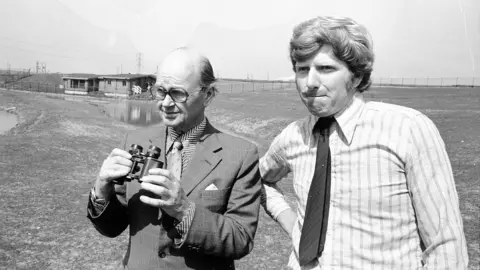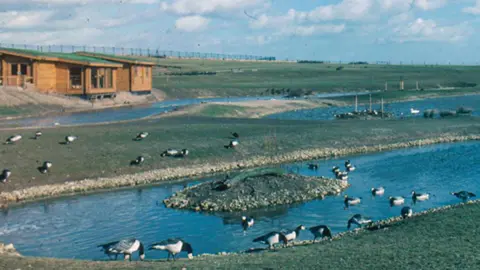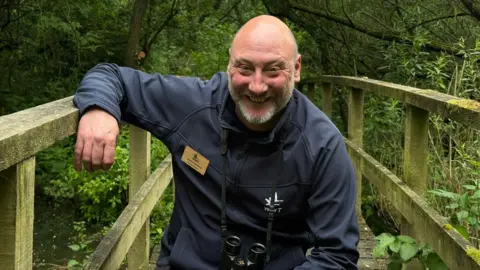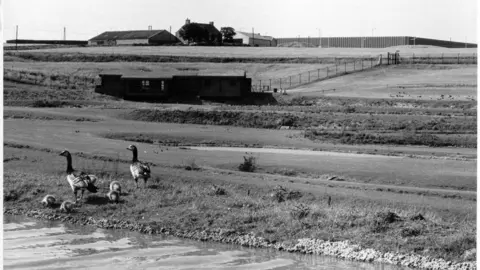Wetlands founder 'wouldn't recognise' site today
 WWT Washington
WWT WashingtonA nature reserve's founder would not recognise it today as it has been "completely transformed" in the 50 years since it opened, its current manager has said.
Washington Wetland Centre, near Sunderland, welcomed visitors for the first time on 29 May 1975.
Half a century later, what was once predominantly farmland has helped bring new species to the area including birds that were "virtually extinct".
Reserve manager John Gowland said he hoped founder Sir Peter Scott would be proud of what the site has achieved.
"It's kind of a double celebration for me," added Mr Gowland, who also turned 50 earlier this year.
 WWT Washington
WWT WashingtonOver the past five decades the farmland has been turned into an array of ponds, waterways and lakes, all of which did not exist before.
"The wardens at the time and Peter Scott himself, I don't think they would recognise that," Mr Gowland said.
"The layout is the same. The ponds and a lot of the wetlands were created by Peter Scott, so they are there.
"It is just completely transformed, alive with wildlife as well, with the trees and the meadows.
"Hopefully they would be very proud of where we are."
 WWT Washington
WWT WashingtonAt least 120 bird species visit the site annually and thousands of different plants and insect can also be seen.
Mr Gowland said the reserve had played important role in increasing the population of avocets.
He said the birds had been "virtually extinct" in the UK, but were breeding regularly at WWT Washington since 2016 and had expanded to 15 pairs.

"No-one could imagine, even a decade before, that avocets would be as common as they are," he said.
"They are nesting elsewhere in the North East so that initial colonisation at Washington has allowed them to expand their range."
Grey herons were another species that would not be in the area in great numbers if it had not been for the wetlands.
The first chicks hatched on the reserve's Wader Lake in 1989 and there are 40 pairs now.
 WWT Washington
WWT WashingtonThe centre has welcomed three million people since it opened and has more than 70,000 visitors annually.
Mr Gowland, from Sunderland, first visited WWT Washington when he was six and later became a volunteer and a warden.
He worked at WWT London before returning to Washington as reserve manager in 2008.
He said climate change meant new animals - including bat species, butterflies and dragonflies - could move up to the area.
 Washington Wetlande Centre
Washington Wetlande Centre